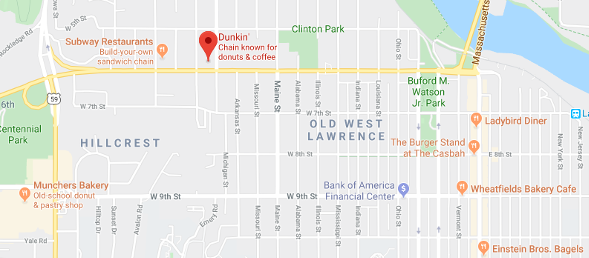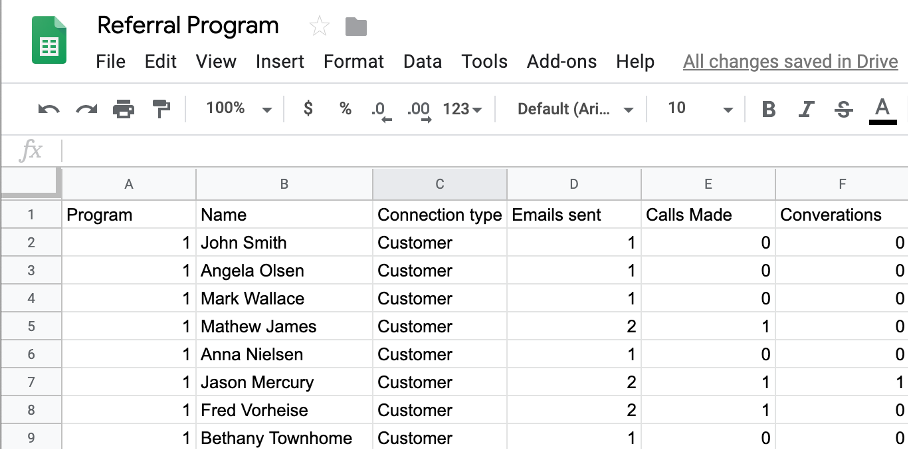How to Create an Amazing Referral Program

How to Create an Amazing Referral Program
Contributed ContentReferral programs are an effective way to create positive growth for your company. By implementing a referral guide, you can grow your customer base and your revenue.
In order for a business to grow, a company has to bring in more revenue. While seeking investments and upgrading current customers creates cash flow, the best way to grow revenue is to grow your overall customer base.
There are several ways to do this. Many businesses rely on outbound techniques such as email and cold calling in combination with inbound marketing tactics such as SEO and advertising. These tactics can be highly effective if done properly.
However, what many businesses miss out on is the power of referral-based customers. According to a survey conducted by Nielsen.com, 84% of the global respondents said word-of-mouth referrals were the most trustworthy source for buyer decisions.
With an average lead conversion rate of 10%-50%, and more than 83% of consumers saying they would be happy to give a referral after a positive experience, it can be baffling that only 23% of sales people ask for referrals.
At Cobalt Iron, an effective referral plan grew our business and improved our employee retention. Here are the key points that this guide will go over to help you create a similarly successful referral program.
How to Create an Amazing Referral Program
- Determine your goals
- Know how to incentivize referrals
- Leverage your current customers
- Leverage your employees’ connections
- Implement “daisy chaining” based on your company’s industry and location
- Measure successes and failures
- Provide examples of campaigns
1. Determine Your Goals
Increasing overall revenue is always a worthy goal. But, this doesn’t need to be the only goal of your referral program. You need to think beyond simply revenue growth and see what other benefits you want to get out of your plan.
Are you trying to penetrate a new market? Use referral connections to ask what additional industries could benefit from your product or service. Are you looking to grow your brand awareness? Remind your customers that you exist with a questionnaire of why they use you, then use the survey to incentivize referrals.
Ask yourself, do you know how or where you are currently getting your referrals? If not, check with your entire team to find out where you currently measure for referrals. This will help you know where and how to realistically execute your plan.
To start, you need to create a plan that is realistic and measurable. I recommend using SMART goals to help lay out a strategy.

SMART stands for:
- Specific (Who are we targeting?)
- Measurable (How many “X” do we need to accomplish “Y?”)
- Achievable (What is a realistic number of referrals to expect?)
- Relevant (What is the best kind of referral program?)
- Time-bound (What is a realistic time frame in which to accomplish our referral goals?)
MindTools has a particularly informative video about SMART goals and how they apply to your business.
Consider all the benefits the SMART plan can provide your business and implement it to the best of your abilities.
2. Know How to Incentivize Referrals
If your customers are truly satisfied with your offering, chances are they will give you referrals for free.
The best time to solicit free referrals is immediately after a customer buys your product. This is when they are the most excited about your offering. If it’s not during this moment, you can reach back out again after they have gotten familiar with your offering. However, the excitement behind your offering has most likely diminished.
When it comes to paid incentives, you aren’t giving them to convince people to refer you. You are using it as an excuse to reach out and reward people that want to refer you. Offer this if you can’t get a free referral.
Start low with your referral amount. From there, gradually move up your rewards amount. You might try something as small as a $20 gift card, although other organizations have gone up to the $200 range.
Once you have your offering determined, you can determine the most valuable organizations to approach about a referral program.
3. Leverage Your Current Customers
The easiest and most obvious place to start with your referral program is your current and past customers. Who better to recommend a product or service than people who have actually used it?
Ideally, you want to reach out to customers that you know who are not only satisfied with your offering but are actually likely to refer you. These could be customers such as resellers that could recommend your product to clients.
Another example could be organizations with several separate departments that could all use your solution. You can mention that you are already working with a certain department and ask if it makes sense to expand to other areas of the company.
Past customers with several connections can also be a good target. Even if they no longer use your service, they likely know someone who could.
Either way, current and past customers are an effective way to get unbiased referrals.
4. Leverage Your Employees’ Connections
The great thing about experience is not just the skills that you learn, but also the connections that you make. Several businesses rely heavily on personal connections to grow their business. If you aren’t doing this already, ask yourself how you can implement this.
If your company has existed for some time, you have probably already surrounded yourself with a solid group of professionals. If these professionals have been in your industry for a few years, they should be connected with potential clients.
Talk to your employees about bringing in referrals from connections that they have. Make sure to reward them appropriately and make sure they feel acknowledgment for the referrals they bring in. See if they can refer their previous company or previous clients for your offering if it makes sense.
5. Implement “Daisy Chaining” Based on Your Company’s Industry and Location
When I worked for the logistics industry, we had a term for prospecting called “daisy chaining.” In computing, daisy chaining is the technique of connecting several peripherals in a chain to a computer.
Daisy chaining can be applied to local businesses. Ask your customers’ permission to reach out to their neighbors. When people learn that their neighbors are already using a service, they are more likely to be intrigued by it.

While this isn’t a true referral, it works as a controlled word of mouth referral directly from your company. It is an especially effective technique for freight brokerage and other offerings that can work for multiple industries.
This technique is particularly useful for local businesses. Not only can you email and call neighboring companies, you can physically visit them while the company you currently work with is active.
You can just say you’re visiting your current client at a certain company and that you thought it made sense to drop by and say hello. This is less intrusive than simply showing up on their doorstep for no reason.
Additionally, you can mention clients that you have worked with in your sales process or outbound marketing. Mention positive reviews you have had from companies in similar industries to the ones you are currently targeting to help build trust.
6. Measure Successes and Failures
As mentioned earlier, no matter how great your efforts are for a referral program, it won’t matter if you don’t have a measurable and repeatable plan. Using SMART goals, you should keep track of your successes and failures, so you know where to concentrate your efforts.
- Specific: Who are you going to target? Your customers, employees, daisy chain companies, or a combination of all 3?
- Measurable: How many calls, emails, events, and other activities need to be run in order to see a positive ROI?
- Achievable: What is a realistic number of referrals to be expected from these efforts?
- Relevant: What is the program that can realistically get started right away that is worth the time and effort?
- Time Bound: What is a realistic and specific time schedule for executing this program?
Once you have these goals in place, make sure you are using a great measurement and team collaboration software to keep track of your efforts.

Platforms such as Monday.com, Flow, and Google Data Studio are great for keeping track of tasks. They also integrate with different data platforms so you can see your ROI in one easy to view interface.
7. Provide Examples of Campaigns
While this guide may be effective, what are some real-life examples of amazing referral programs you can model your business’s after?
In the data backup space, the first program that comes to mind is Dropbox. Using a refer a friend feature, Dropbox offered up to 16gb of free backup storage for referred signups.
The results of this allowed Dropbox to increase their signups by 60%. In 2010, the service had over 4 million users. To this day, 35% of daily sign-ups are from the referral program.
For even more successful programs, check out this list from Referral Candy.
Find the Right Referral Program for Your Business
You can decide to go with a more traditional customer-based program, one that leverages business connections, or a combination of the two. Either way, by following this guide, you should move in the right direction for your referral program.
Just remember to use the SMART method and use your current customers to achieve success.
